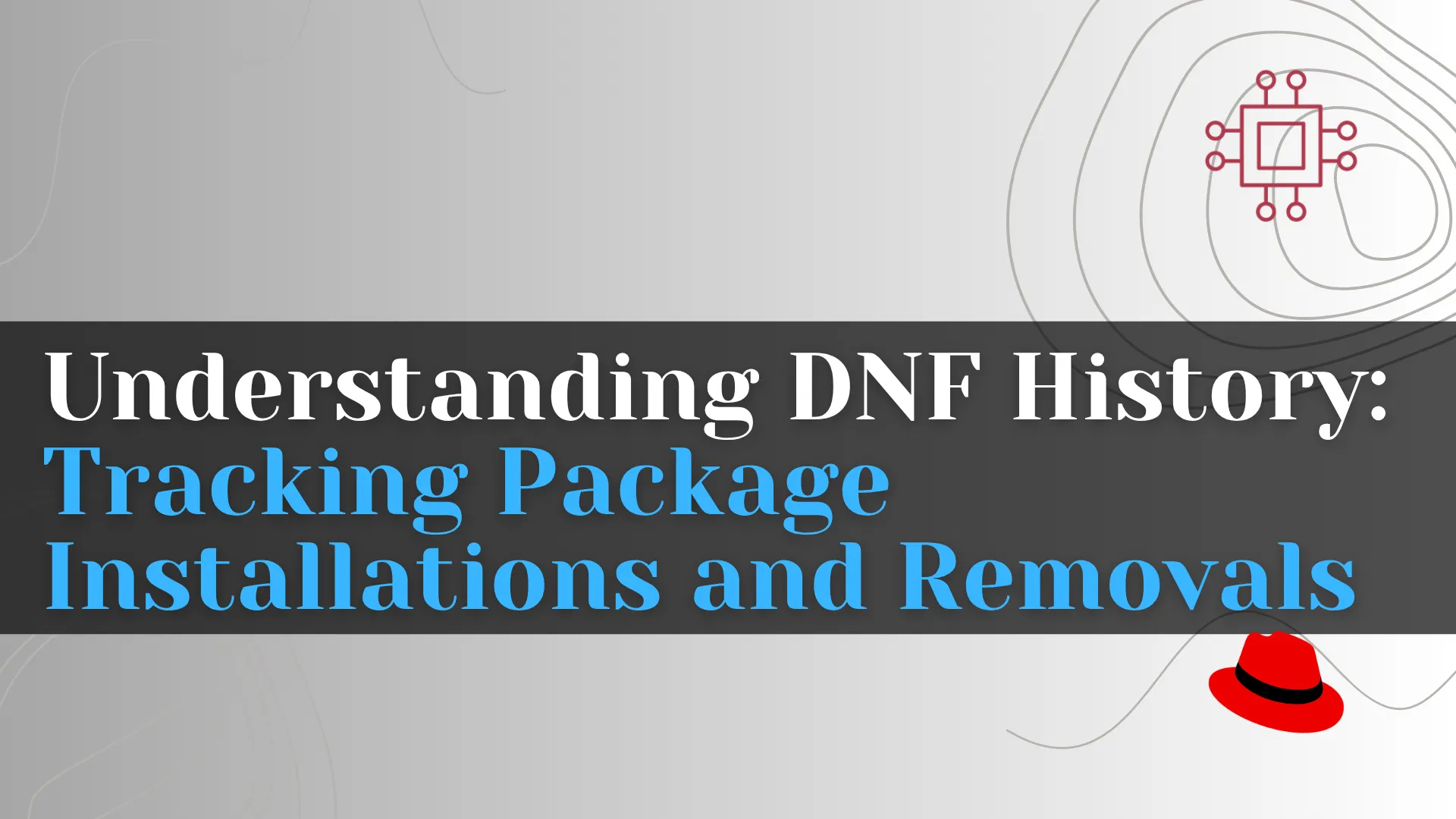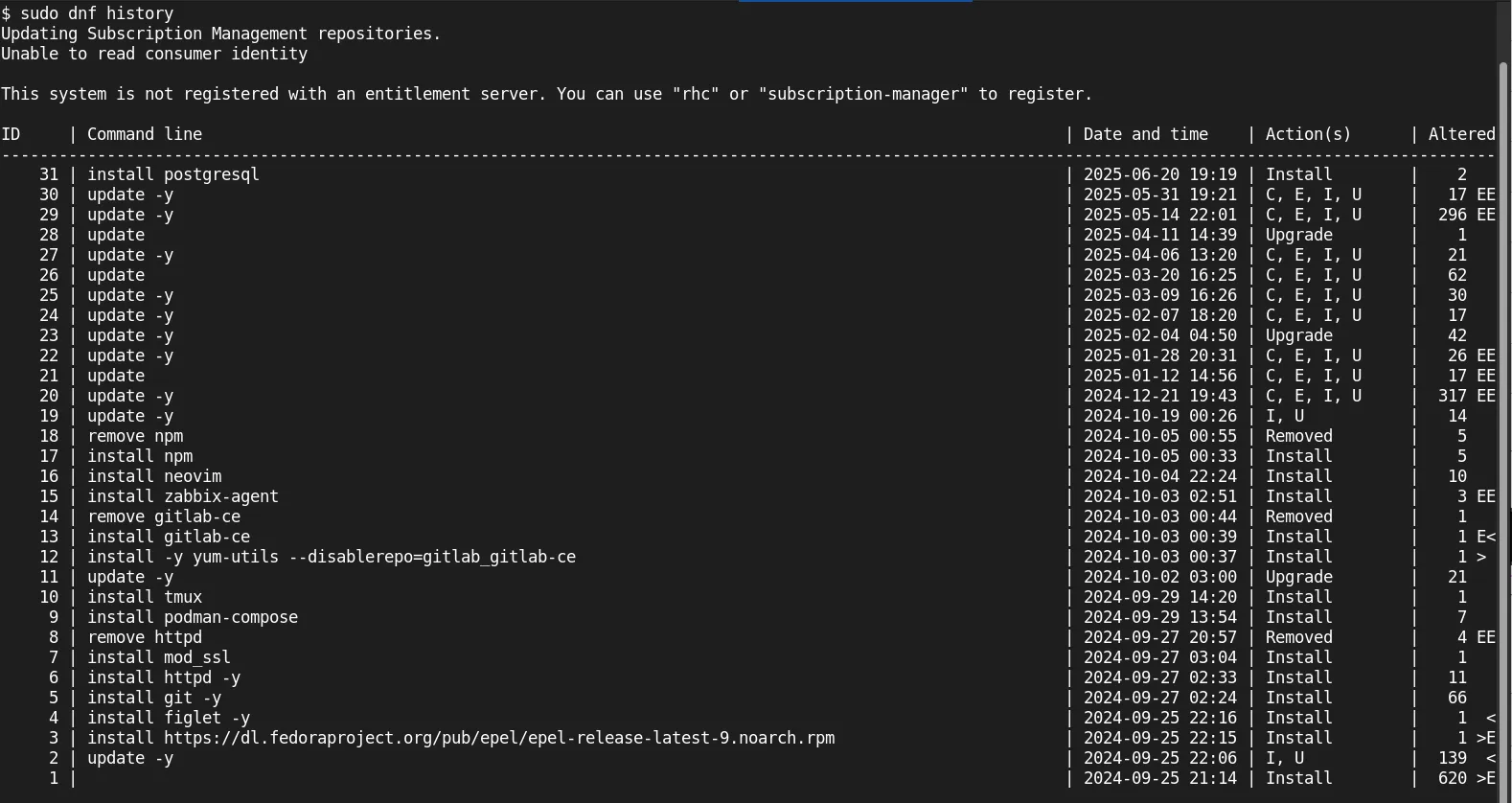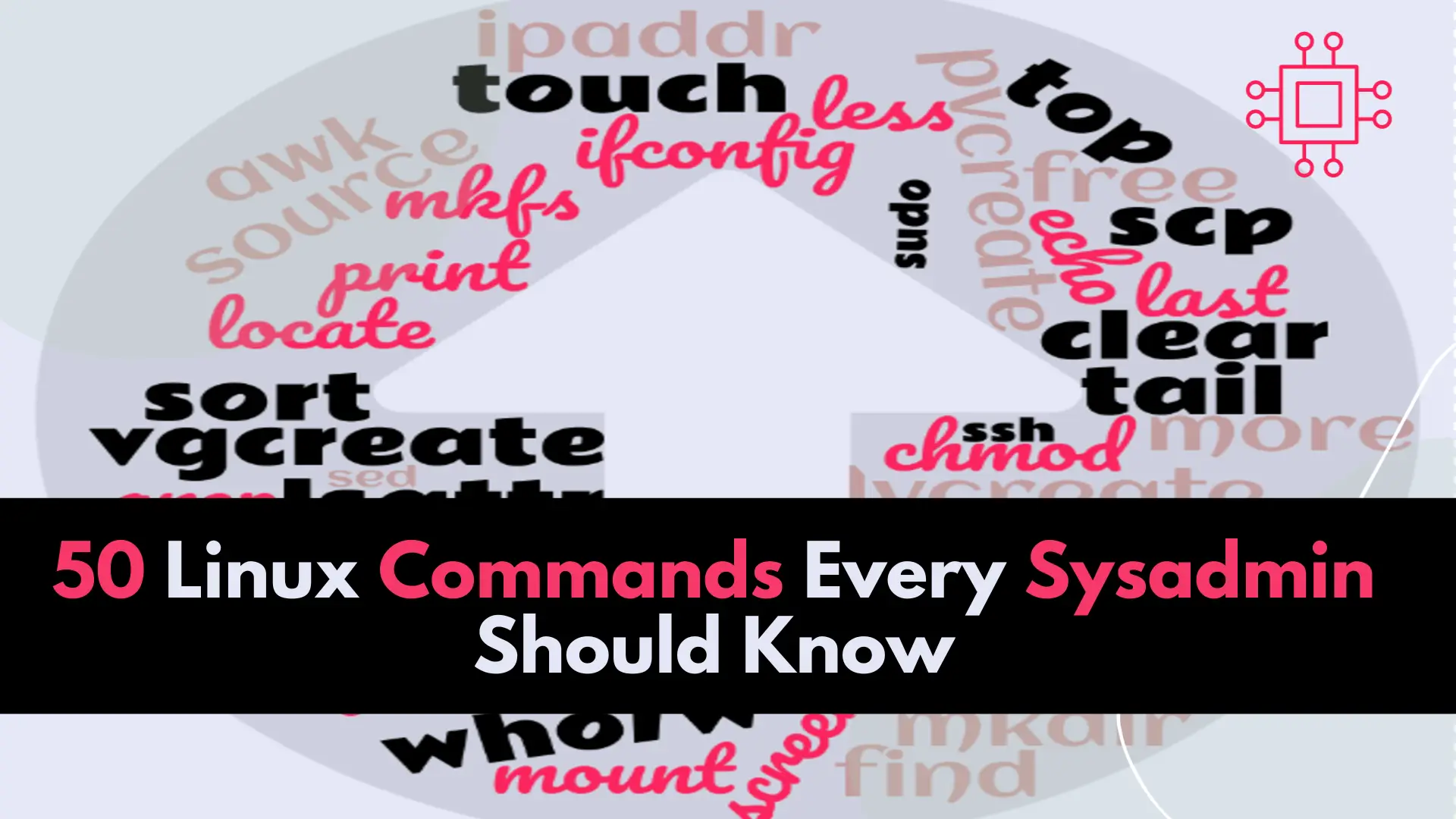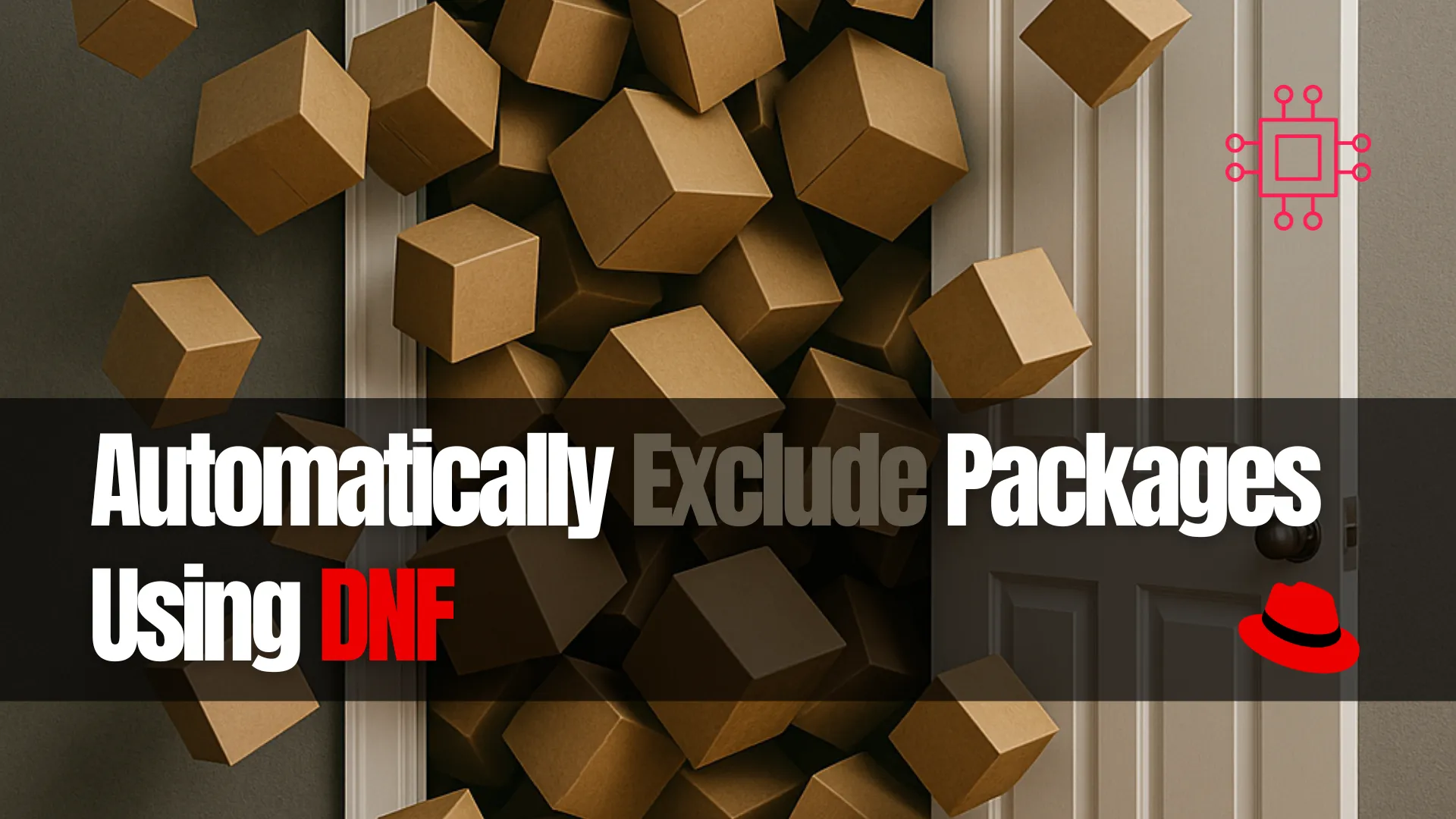
Learn how to inspect and extract RPM package contents using various tools like rpm, rpm2cpio, and repoquery. Discover detailed examples and best practices for managing

Understanding dnf history for tracking, auditing, and undoing package installs and removals on Fedora/RHEL. CLI examples, tables, best practices included.
In the world of Red Hat–based Linux distributions (Fedora, RHEL, CentOS Stream, AlmaLinux, Rocky Linux), dnf is the go‑to package manager. As system administrators and DevOps engineers, visibility into package installations and removals is crucial. That’s where dnf history shines—offering transparency, auditability, and repair capabilities.
In this blog post, we’ll dive deep into DNF history, explaining how to track transactions, analyze them, undo mistakes, and integrate insights into system monitoring. Each section is crafted with an SEO strategy: headings with target keywords, practical examples, tables, and structured data.
dnf history and why it matters dnf history is a subcommand of DNF that tracks package management transactions in a database located in /var/lib/dnf/history.sqlite. It records installs, updates, removals, and more, along with metadata like timestamps, user, duration, and exit status.
✅ Benefits: |
|
|
|
|
dnf history works under the hood DNF keeps a lightweight SQLite DB of transactions. Each transaction record includes:
| Column | Description |
|---|---|
id | Internal transaction ID |
date | Timestamp of transaction |
user | UID of invoking user |
command | Exact command invoked |
rpms | Number of packages involved |
duration | Time taken |
state | Success/failed status |
sudo dnf history

Photo by admingeek from Infotechys
dnf history output breakdown| Field | Meaning |
|---|---|
ID | Unique history ID |
Command | What command triggered the transaction (install/update/remove) |
Date and time | When it occurred |
Action(s) | Install, Erase, Update, Downgrade |
Altered | Number of packages affected |
To unpack a specific transaction:
dnf history info 31
Not root, Subscription Management repositories not updated
Transaction ID : 31
Begin time : Fri 20 Jun 2025 07:19:53 PM EDT
Begin rpmdb : 2230462844fe98a91a27511d3abc7012d950d993d6d9448e36e0f5b2ef11ad79
End time : Fri 20 Jun 2025 07:19:57 PM EDT (4 seconds)
End rpmdb : be2fc89b97b2340ed0d3f6df1d81b2066770e9d40134c93b0514fc39a341580d
User : <webapp1>
Return-Code : Success
Releasever : 9
Command Line : install postgresql
Comment :
Packages Altered:
Install postgresql-13.20-1.el9_5.x86_64 @repository.dev.naijalabs.net_rhel-9-for-x86_64-appstream-rpms
Install postgresql-private-libs-13.20-1.el9_5.x86_64 @repository.dev.naijalabs.net_rhel-9-for-x86_64-appstream-rpms
This provides clear insight into all package-level changes.
🔄 Undo a single transaction |
sudo dnf history undo 31
Updating Subscription Management repositories.
Unable to read consumer identity
This system is not registered with an entitlement server. You can use "rhc" or "subscription-manager" to register.
Last metadata expiration check: 3:39:15 ago on Mon 23 Jun 2025 03:20:04 PM EDT.
Dependencies resolved.
============================================================================================================================================================
Package Architecture Version Repository Size
============================================================================================================================================================
Removing:
postgresql x86_64 13.20-1.el9_5 @repository.dev.naijalabs.net_rhel-9-for-x86_64-appstream-rpms 5.8 M
Removing dependent packages:
postgresql-private-libs x86_64 13.20-1.el9_5 @repository.dev.naijalabs.net_rhel-9-for-x86_64-appstream-rpms 335 k
Transaction Summary
============================================================================================================================================================
Remove 2 Packages
Freed space: 6.2 M
Is this ok [y/N]:
Reverses installation, removal, or upgrades from transaction 31.
🧠 Rollback multiple transactions |
Suppose you want to rollback the last 2 transactions (IDs 31 and 30):
sudo dnf history rollback 29
This returns the system to the snapshot at history ID 29.
⚠️Warning: Some rollbacks may fail if dependencies changed since. |
You may be interested in when a specific package was installed, updated, or removed (sudo dnf history list <package> or sudo dnf history <package>):
sudo dnf history neovim
...omitted for brevity...
ID | Command line | Date and time | Action(s) | Altered
------------------------------------------------------------------------------------------------
16 | install neovim | 2024-10-04 22:24 | Install | 10
dnf history subcommands| Task | Command |
|---|---|
| Show all history | dnf history |
| View details of one entry | dnf history info <ID> |
| Undo a transaction | dnf history undo <ID> |
| Rollback multiple entries | dnf history rollback <ID> |
| Search for package activity | dnf history list <package> |
To leverage "dnf history" in production:
|
dnf history > /var/log/dnf-history-$(date +%F).log
|
|
|
|
|
sqlite3 /var/lib/dnf/history.sqlite "DELETE FROM transaction WHERE id < 50000;" # Repack with .vacuum
|
|
dnf history is an indispensable tool for system transparency, auditability, troubleshooting, and even security. By mastering it, you can detect, document, and reverse package-level changes with precision.
Whether you’re a Linux system administrator, DevOps engineer, or security professional, understanding how and when packages were installed, updated, or removed is critical to maintaining a stable and secure system. With dnf history, you not only gain insight into the state of your environment but also the power to correct unintended changes quickly and reliably.
Moreover, integrating dnf history into your routine monitoring and reporting workflows helps meet compliance requirements, simplifies incident response, and ensures change control is enforced across environments. When combined with tools like log analyzers, cron jobs, and version control of configurations, dnf history becomes part of a larger ecosystem of infrastructure intelligence.
Did you find this article helpful? Your feedback is invaluable to us! Feel free to share this post with those who may benefit, and let us know your thoughts in the comments section below.

Learn how to inspect and extract RPM package contents using various tools like rpm, rpm2cpio, and repoquery. Discover detailed examples and best practices for managing

In this article, we will review the top 50 Linux commands every Linux Sysadmin should know. Junior-level sysadmins and Linux enthusiasts are familiar with all

Learn how to automatically exclude packages using DNF on Linux-based systems. This guide covers DNF exclusion options, CLI examples, and strategies for managing package installations
